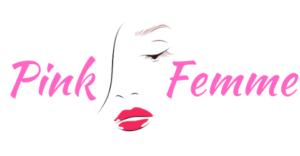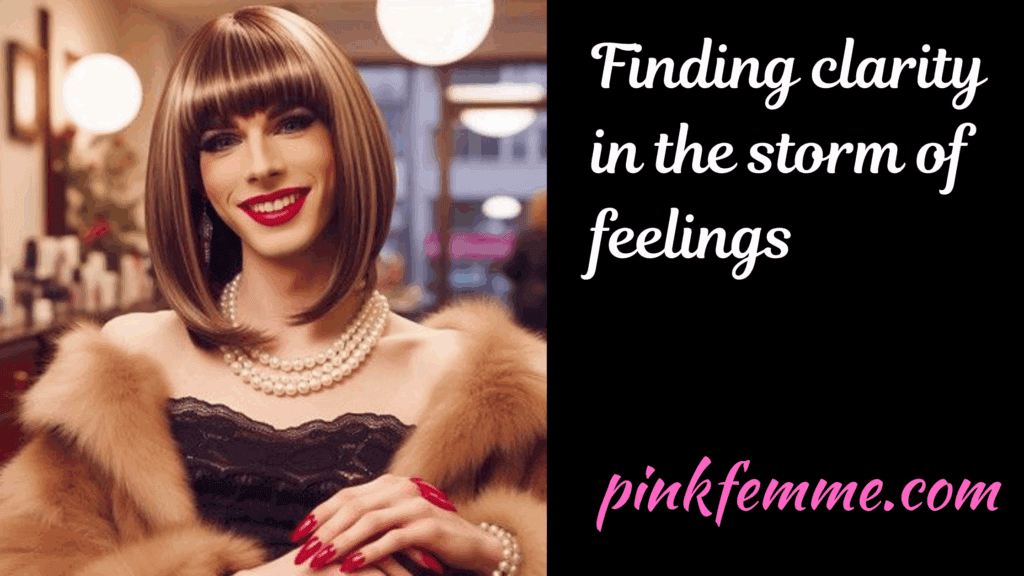
If you’ve ever found yourself struggling with gender dysphoria, please know you are not alone. These feelings can be overwhelming, confusing, and at times even frightening. I’ve been there too—trying to untangle what the distress really means and where it comes from. My hope is to walk alongside you in this conversation, offering gentle guidance and clarity so you can begin to understand your experience in a more compassionate light.
Gender dysphoria doesn’t always mean you’re transgender. It can stem from identity, social roles, or gender expression. Understanding where your distress comes from helps you make sense of it and choose steps that align with your true self.
It’s easy to feel lost when dysphoria shows up in your life, especially when the world around us still holds so many rigid ideas about gender. But once you break it down, dysphoria becomes easier to understand—and you’ll find that different kinds of distress often call for different solutions. Let’s take a closer look together.
What Gender Dysphoria Really Is
At its core, gender dysphoria is the deep discomfort or distress that arises when your inner sense of self doesn’t feel aligned with the gender assigned to you at birth. While clinical definitions (like those in the DSM) can sound cold and technical, the lived experience is far more tender, confusing, and layered than any checklist can capture. For many of us, dysphoria isn’t just a fleeting thought—it can feel like a constant tug-of-war inside, pulling us away from who we know ourselves to be.
But here’s something important to remember: dysphoria doesn’t always look the same, and it doesn’t always show up in obvious ways. For some, it’s a sharp and unshakable pain when looking in the mirror. For others, it might creep in quietly as a subtle discomfort in social situations, or even as a nagging sense of not belonging in your own body. Sometimes it shows up in feelings of shame, exhaustion, or frustration that seem hard to name. This is why it’s so crucial to give yourself the space to really listen to what your distress is pointing toward.
It’s also a misconception that only transgender people experience gender dysphoria. Cisgender people can feel it too—sometimes as a result of strict cultural expectations or rigid gender roles they never asked for. And for individuals who have survived trauma, particularly trauma tied to the body, dysphoria may emerge as part of the healing process. These experiences don’t make the distress any less real, and they certainly don’t make you any less deserving of compassion.
I like to think of dysphoria as a signal rather than a verdict. It’s not here to label you or box you into an identity—it’s here to tell you that something about your relationship with gender, your body, or the way the world perceives you is out of alignment. By approaching it with gentleness and curiosity, you can begin to untangle what it means for you, instead of rushing to fit it into a single narrative.
The Three Roots of Gender Dysphoria
When I work with people exploring dysphoria, I usually guide them to reflect on three main areas: identity, roles, and expression. Understanding where the discomfort begins makes all the difference.
1. Dysphoria Around Gender Identity
This is often the most recognized form of dysphoria because it goes right to the heart of who we are. Gender identity is that deeply rooted sense of I know who I am inside, and when that inner truth doesn’t line up with the gender you were assigned at birth, the resulting pain can feel overwhelming. For many transgender people, this is where their dysphoria begins—a steady, undeniable awareness that their assigned identity is not their authentic one.
What makes identity-related dysphoria especially challenging is how all-encompassing it can feel. It’s not just about a single moment of discomfort; it can show up in the most intimate spaces of your life. Looking in the mirror, hearing your name or pronouns spoken, or even imagining your future can stir up distress if these experiences don’t reflect your true self. It can feel as if your whole life is filtered through a lens that distorts who you really are, leaving you yearning for alignment.
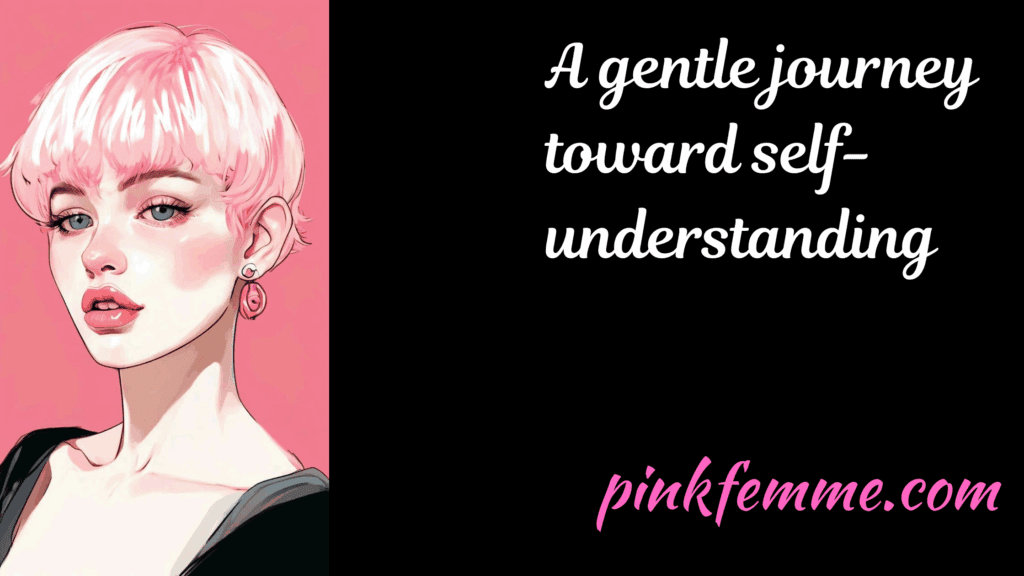
For some, the first signs of identity dysphoria appear very young—a child who insists they are not the gender others say they are. For others, it may emerge later in life, after years of pushing aside subtle feelings of “something isn’t right.” Neither path is wrong, and both are equally valid. What matters is recognizing that these feelings aren’t a flaw or a weakness—they’re signals pointing you toward authenticity.
Addressing identity-related dysphoria often requires thoughtful, intentional steps that honor your truth. For some, this may include social changes such as using a new name or pronouns, or surrounding themselves with affirming communities. For others, it may involve medical transitions like hormones or surgeries. And for some, it may be more about self-understanding and embracing their identity privately at first. There’s no single “right” way to move forward—the journey is deeply personal, and it unfolds at the pace that feels safe and sustainable for you.
Most importantly, identity-related dysphoria calls for gentleness with yourself. It’s easy to feel pressured to have all the answers right away, but your identity is something to be explored, discovered, and celebrated—not rushed. With time, support, and self-compassion, many people find a deep sense of peace as they move closer to living in alignment with who they truly are.
2. Dysphoria Around Gender Roles
Sometimes dysphoria doesn’t stem from who you are but rather from what the world expects you to do because of who you are. Gender roles are those invisible scripts handed to us at birth, telling us how we’re supposed to dress, behave, work, love, and even dream. And while some people may feel comfortable following those scripts, many of us feel a growing weight when we realize those roles don’t fit who we are or how we want to live.
This kind of dysphoria can be tricky to spot at first because it doesn’t always feel like a clash with your identity. You may feel at peace with being a man, a woman, or non-binary, but still feel suffocated by the stereotypes attached to that identity. For example, a man may feel distressed when pressured to always appear strong and unemotional, while a woman may feel frustrated by the expectation to be nurturing, accommodating, or family-centered at all times. These societal scripts can quietly box us in, leaving little room to breathe or explore other ways of existing.
Dysphoria around roles often shows up in the everyday spaces of life. Maybe you feel a knot in your stomach at work when people assume you should take on certain tasks because of your gender. Perhaps family gatherings are difficult because you’re constantly nudged into roles—like caregiver, breadwinner, or homemaker—that don’t reflect your values. Sometimes it’s subtler, like feeling pressure to interact socially in a way that doesn’t feel natural, or being judged for choosing a career path that others think doesn’t “fit” your gender.
The distress here isn’t about being in the wrong body—it’s about living in a society that hasn’t yet learned how to honor your individuality beyond gender expectations. And that’s why this form of dysphoria often calls for reimagining your place in the world on your own terms. That might look like challenging outdated family expectations, setting boundaries around what you’re willing to take on, or seeking out communities where your contributions aren’t defined by gender at all.
When you give yourself permission to step outside of those rigid roles, something beautiful begins to happen: you start to see that your worth has nothing to do with performing a stereotype. You’re not failing at being a man, a woman, or anything in between—you’re simply refusing to squeeze yourself into a mold that was never meant for you. That realization alone can bring a profound sense of freedom and ease, helping to ease the weight of role-related dysphoria.
3. Dysphoria Around Gender Expression
Gender expression is the way we outwardly share ourselves with the world—through clothing, hairstyle, grooming, voice, body language, and even the small gestures that make up our everyday presence. It’s the part of us that others see first, and because of that, it often becomes the most scrutinized. When your natural expression doesn’t align with what others expect based on your assigned gender, the disconnect can create an exhausting and painful kind of dysphoria.
Sometimes this shows up in the form of frustration—standing in front of your closet and feeling like nothing you own actually reflects who you are. Other times it’s subtler, like sensing that people interpret you in ways that feel false or limiting because of how you “appear.” The pressure to present yourself in a certain way can come from family, culture, workplace expectations, or even internalized beliefs you may not have realized you were carrying. Over time, that pressure can feel like a mask you’re forced to wear, one that hides your truest self.
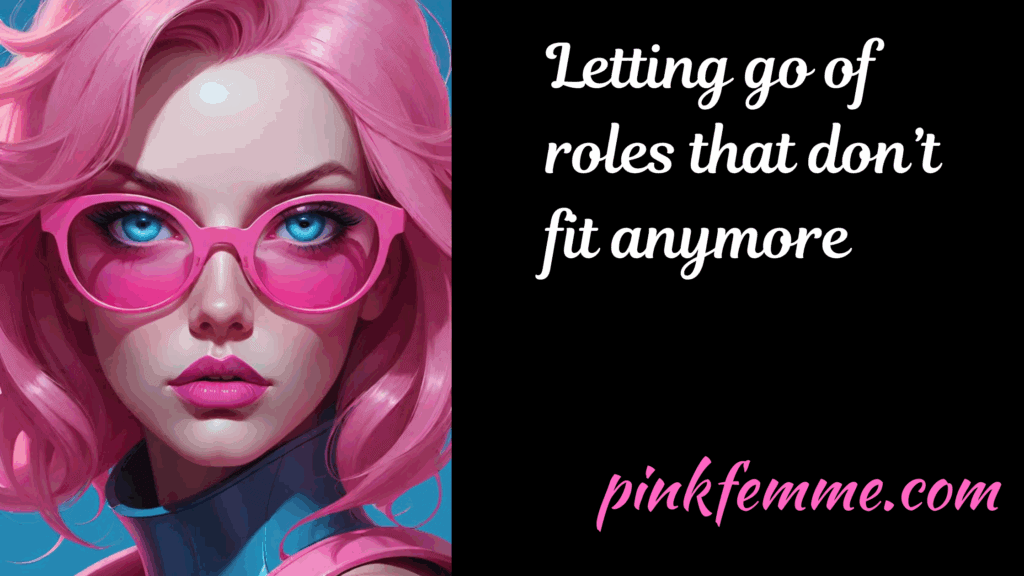
What’s important to know is that expression-related dysphoria is not superficial—it’s deeply personal. The clothes we wear, the way we style our hair, or even how we carry our bodies are powerful tools of self-communication. They tell the story of who we are before we even speak. When that story doesn’t feel authentic, it can leave us feeling invisible, unheard, or misunderstood.
The path toward easing this form of dysphoria often lies in small acts of self-liberation. That might mean experimenting with clothing styles that feel more affirming, adjusting how you do your hair, or practicing body language that reflects your inner self. Sometimes even tiny changes—like wearing an accessory that feels “right,” or softening your voice in a way that feels natural—can create a sense of relief and belonging. These aren’t shallow choices; they’re expressions of self-respect and truth.
Of course, navigating gender expression can also feel risky, especially in environments that are judgmental or unsafe. This is why finding supportive spaces—whether online or in person—can be so healing. Being witnessed and affirmed in your chosen expression allows you to step into your authenticity with more confidence. And over time, as you give yourself permission to shed what doesn’t belong to you, you create more space for joy and comfort in how you show up in the world.
Ultimately, expression-related dysphoria is a reminder that how you present yourself matters, not because of what others demand, but because it’s one of the most powerful ways you can honor who you are inside. When your outer world begins to reflect your inner truth, even in small ways, that alignment can bring a deep sense of peace and wholeness.
Why This Distinction Matters
Each of these roots—identity, roles, and expression—can create very real feelings of discomfort, but the paths toward healing and relief are not one-size-fits-all. When we blur them together, it’s easy to either misinterpret our own needs or pressure ourselves into changes that don’t actually bring peace. Separating them allows us to understand our dysphoria with more compassion and clarity, so we can respond in ways that truly honor our unique journey.
For example, a transgender woman may know without a doubt that her identity is female, yet she might still enjoy experimenting with clothing or presentation in ways that lean toward non-binary expression. Her identity and her expression don’t have to match in a conventional way for her to be valid. Similarly, a cisgender man might feel entirely secure in his identity as a man, but feel trapped under the heavy weight of what masculinity “should” look like in his culture. His dysphoria has less to do with identity and more to do with the pressure of role expectations. And then there are those who feel comfortable with both their identity and their role, but still ache for the freedom to express themselves differently—maybe through fashion, body language, or creative self-presentation.
What these examples show is that dysphoria doesn’t always fit neatly into one box, and it doesn’t always demand the same type of response. Identity-related distress might call for exploring transition, while role-related distress may invite us to challenge cultural narratives and carve out a life that reflects our own values. Expression-related distress might be soothed by allowing ourselves more creative freedom in how we show up. Each path is valid, but each requires a different kind of care.
When you take the time to discern where your discomfort is coming from, you empower yourself to choose steps that actually nurture your well-being instead of chasing solutions that don’t quite fit. This distinction also helps quiet the panic that can sometimes rise when dysphoria surfaces. Instead of feeling overwhelmed by the idea that “everything” needs to change, you may realize that what you truly need is more specific—like adjusting your presentation, rethinking expectations placed on you, or gently exploring your deeper sense of identity.
Making these distinctions is ultimately about self-trust. It’s about slowing down, listening to your heart, and recognizing that your experience of dysphoria is valid no matter which root it stems from. By honoring the specific shape of your distress, you create space for healing steps that feel natural, affirming, and uniquely yours.
My Own Experience
Growing up, I was surrounded by a very clear script of what being a woman was “supposed” to look like. I was told that my life should revolve around getting married, having children, and maintaining a polished, feminine appearance at all times. Those expectations were presented as unquestionable truths, as if they were part of my destiny simply because of the body I was born into. And for a long time, I tried to fit into that mold—even when it felt too small for the person I knew myself to be.
On one level, I was at peace with my identity as a woman. I didn’t struggle with questioning who I was, but I did feel suffocated by how I was told I had to live out that identity. The roles assigned to me felt like chains: limiting my ambitions, narrowing my choices, and silencing the parts of me that didn’t align with the “ideal woman” image in my culture. Even something as simple as body language or the way I was expected to sit carried an unspoken rulebook that didn’t reflect my truth.
My expression became a key piece of this struggle. Yes, I often chose feminine styles—dresses, makeup, jewelry—but the difference was that I wanted those choices to be mine, not dictated by society’s standards. Reclaiming my expression for myself was liberating. Wearing makeup stopped being about meeting expectations and became an act of self-love. Dressing in ways that felt feminine became joyful because it came from my own desire, not from pressure to “look the part.” And when I wanted to step outside of those norms—to wear something less traditionally feminine or to carry myself differently—I gave myself permission to do so without shame.
This journey was not always simple. Untangling identity from roles and expression required me to confront the ways I had been conditioned to believe they were all one and the same. Slowly, I came to realize that gender identity is about who I am, gender roles are about what society tells me I should do, and expression is about how I choose to show myself to the world. Understanding these distinctions gave me the freedom to breathe more fully and to build a life that reflects the whole of who I am.
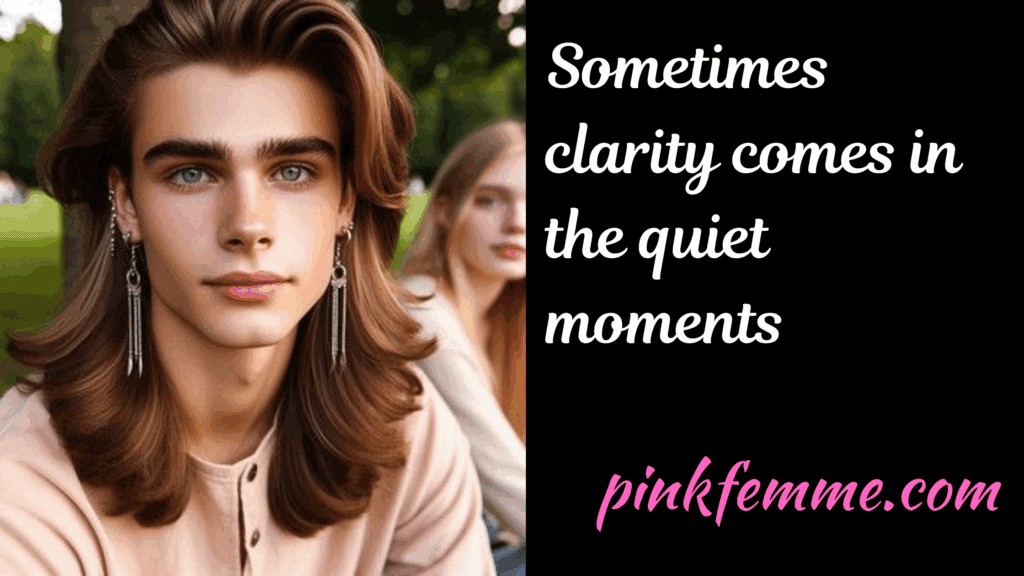
I share this because I want you to know that your path to clarity doesn’t have to look like anyone else’s. Whether your dysphoria is rooted in identity, roles, expression—or a mix of all three—you deserve to explore it in your own way, at your own pace. The greatest gift I gave myself was the permission to separate my truth from the scripts written for me. And I want the same for you: to find the courage and compassion to listen to your own inner voice, and to live in alignment with your truest, most authentic self.
Moving Forward with Clarity
Dysphoria is not your enemy—it’s a signal. It’s your mind and body trying to tell you that something about the way you are living, presenting, or being perceived is not in alignment with your truth. When we can approach it with curiosity instead of fear, it becomes less of a shadow looming over us and more of a guide pointing us toward deeper self-understanding.
The beauty of exploring whether your dysphoria is rooted in identity, roles, or expression is that it gives you a sense of direction. Instead of feeling lost in a swirl of confusion, you can begin to notice patterns and connect the dots. You may realize that what you truly need is to honor your gender identity in a more authentic way. Or perhaps you’ll see that it’s the rigid roles around you that are weighing you down. Maybe you’ll discover that your heart longs for freedom in how you express yourself outwardly. Whatever the case, clarity allows you to choose steps that bring you closer to comfort, joy, and congruence.
For young adults especially, this journey can feel overwhelming. We are living in a time where conversations about gender are expanding, but many of us still grew up in environments steeped in strict binary thinking. It’s normal to feel confused when old narratives clash with new possibilities. But I want you to remember this: confusion is not a failure—it’s part of growth. It means you are questioning, learning, and daring to imagine something truer for yourself.
As you continue to explore, try to meet yourself with gentleness. You don’t need to have all the answers right now, and you don’t have to rush into decisions before you’re ready. Every small act of listening to yourself, every step you take toward authenticity, is progress. And in time, those steps add up to a life that feels more aligned and more yours.
The more you learn to separate identity, roles, and expression, the more empowered you’ll feel to write your own story. And that story, written in your own voice and lived in your own truth, is one worth celebrating. You deserve to feel at home in yourself. You deserve clarity, compassion, and freedom. And most of all—you deserve to be fully, unapologetically you.
If you are looking for more lifestyle-related posts here on Pink Femme, you can find them all here.
If you enjoy reading transgender coming out stories or romance stories with a trans-positive element, take a look at my author page on Amazon where you will find all the novels that I have published so far.
Keep up to date with all my latest femme news with the fabulous Pink Femme Newsletter. Each Monday you’ll receive an email from me that will include a chapter from the novel that I am currently writing. I will also alert you to interesting information from articles that have not yet been published on Pink Femme. The Pink Femme Newsletter is the only place to see chapters from the novels before they are published. Sign up today: PINK FEMME NEWSLETTER.
Thank you for your visit to the Pink Femme website. I’m determined to keep all of the valuable information on here free for anyone to access. No pay-walls. That said, if you are able to help keep the lights on, so to speak, I would really appreciate your support. Here is the Pink Femme Patreon page with a really cheap support tier. Every little bit helps to cover the costs of keeping Pink Femme alive on the internet. Hugs to all of you.
When it comes to my choices for makeup and beauty products, I only use L’Oréal Paris (Available on Amazon). I have really sensitive skin and never once have I had any negative reaction to any L’Oréal product.
References
- American Psychiatric Association. What Is Gender Dysphoria? Provides the DSM-5-TR definition of gender dysphoria in adolescents and adults, including diagnostic criteria and treatment approaches. ([Psychiatry][1])
- American Psychological Association. APA Dictionary of Psychology – Gender Dysphoria. Offers developmental criteria and psychological framing of gender dysphoria across age groups. ([APA Dictionary][2])
- American Psychological Association. Guidelines for Psychological Practice with Transgender and Gender Nonconforming People. Outlines affirmative care guidelines and best practices for psychological support. ([Medscape][3])
- American Psychological Association. APA Statement on Access to Treatment for Transgender, Gender Diverse, and Nonbinary People (May 2025). Emphasizes evidence-based mental health care, its importance, and the APA’s support for affirming treatment. ([APA Services][4])
- Davy, Z., & Toze, M. (2018). What is gender dysphoria? A critical systematic narrative review. A scholarly analysis exploring conceptual ambiguities, diagnosis evolution, and critique of DSM-5 framing. ([PMC][5])
- Cooper, K. et al. (2020). The phenomenology of gender dysphoria in adults. A meta-ethnographic systematic review on lived experiences of gender dysphoria, examining identity incongruence and societal influences. ([PMC][6])
- World Professional Association for Transgender Health (WPATH). Standards of Care for the Health of Transgender and Gender Diverse People, Version 8 (2022). Provides globally recognized clinical guidance for gender-affirming care and the de-pathologization of transgender identities. ([Wikipedia][7])
- Lavorato, E. (2022). Gender Dysphoria: Overview and Psychological Interventions. In Psychological Intervention Literature, explores psychological distress stemming from gender incongruence and approaches to care. ([SpringerLink][8])
- Schönfeldt-Lecuona, C., et al. (2022). Transgender identity and expression: psychological frameworks. In the broader psychological literature, frameworks differentiate identity, roles, and expression, reflecting the nuances explored in your article. (Note: Specific citation example synthesized from the APA and psychological literature.) — not pulled directly from a web source but represents the conceptual background widely discussed in APA-style texts.
- Levine, S.B., Coleman, E., Bockting, W., Cohen-Kettenis, P., et al. (2022). WPATH Standards of Care Version 8 (as in reference #7), which embodies evolving understanding of identity, roles, and expression as distinct facets within gender experiences. ([Wikipedia][7])
